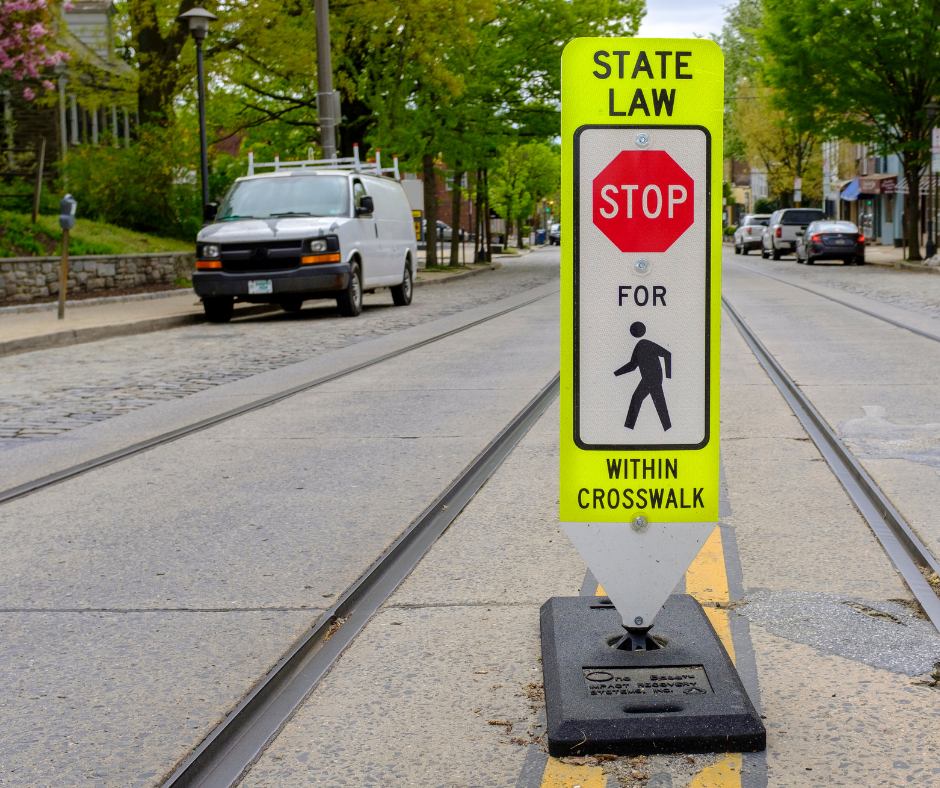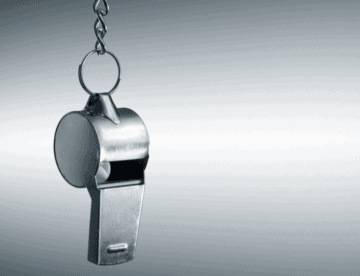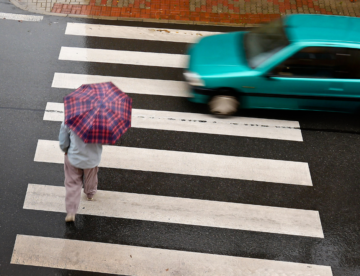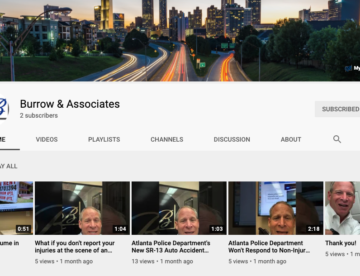
If you live in the Metro Atlanta area, you may have noticed more crosswalks and pedestrian crossing signs being installed in your neighborhood. With gyms and other fitness facilities still closed for health and safety precautions, more people are taking to the streets to get their exercise. The crosswalks and signals are designed to protect pedestrians, but what should you do if you’re in your car? In Burrow & Associates’ latest blog, we’re taking a look at Georgia laws related to crosswalks and pedestrians.
Crosswalks and Pedestrian Crossing Signals
Georgia Law defines a traditional crosswalk as a portion of a roadway at an intersection where lines or other markings indicate where a person can safely walk. Recently, Georgia has also started installing non-traditional crosswalks and signals. A Pedestrian Hybrid Crosswalk is a painted section of the roadway, accompanied by a yellow or red flashing light. The pedestrian presses a button on the roadside when they are ready to cross; the flashing lights will return to normal after a few seconds. Rectangular Rapid Flash Beacons are typically found at intersections that do not have a traffic light or standard traffic signal. With these Beacons, the pedestrians activate a pedestrian crossing warning sign that has flashing white or yellow LEDs. The sign indicates to drivers that the pedestrian is about to cross the roadway.
Georgia Laws Related to Vehicles and Crosswalks
Since 1995, Georgia law requires drivers to stop and yield to people walking in crosswalks. Drivers have to stop and stay stopped until the pedestrian has left their side of the road. (OCGA § 40-6-91(a) The driver of a vehicle shall stop and remain stopped to allow a pedestrian to cross the roadway within a crosswalk when the pedestrian is upon the half of the roadway upon which the vehicle is traveling, or when the pedestrian is approaching and is within one lane of the half of the roadway on which the vehicle is traveling or onto which it is turning.)
So, in other words, let’s say you are driving on a four-lane road with two lanes going north and two lanes going south. A pedestrian either enters the marked crosswalk or hits the pedestrian signal. They are walking from the northbound lanes across to the southbound lanes. The cars in both of the northbound lanes must stop. The cars in the closest southbound lanes must stop. Any cars in the furthest southbound lanes can continue moving until the pedestrian crosses the median – then, they also have to stop. Once the pedestrian is safely on the other side of the roadway, traffic can resume. If you’re driving on a two-lane road, with one lane going north and one lane going south, both sides have to stop, and stay stopped, until the pedestrian is safely on the other side of the road.
Another Georgia law prevents vehicles from driving around stopped cars or cutting off pedestrians. (OCGA § 40-6-91(d) Whenever any vehicle is stopped at a marked crosswalk or at any unmarked crosswalk at an intersection to permit a pedestrian to cross the roadway, the driver of any other vehicle approaching from the rear shall not overtake and pass such stopped vehicle.) So, if you see that other cars are stopped and that someone is walking across the crosswalk or roadway, don’t try to squeeze around the other cars or cut off the pedestrian. It’s against the law, and it’s just not safe for anyone involved.
Georgia Laws Related to Pedestrians and Crosswalks
Just as Georgia has laws related to cars and crosswalks, there are also some laws in place for pedestrians and crosswalks. These laws are designed to keep pedestrians safe. To begin, a pedestrian should not suddenly walk into the street or in front of a moving vehicle (OCGA § 40-6-91(b) No pedestrian shall suddenly leave a curb or other place of safety and walk or run into the path of a vehicle which is so close that it is impractical for the driver to yield). If someone steps onto a crosswalk into oncoming traffic, they could be held liable for their own injuries. It is legal for someone to cross the street on an unmarked crosswalk, but in that situation, the pedestrian has to yield to the oncoming vehicles – not the other way around. (OCGA § 40-6-92(a) Every pedestrian crossing a roadway at any point other than within a marked crosswalk or within an unmarked crosswalk at an intersection shall yield the right of way to all vehicles upon the roadway unless he has already, and under safe conditions, entered the roadway.) If a pedestrian crosses outside of a crosswalk and fails to yield to traffic, they could be liable for their own injuries. Finally, if a pedestrian wants to cross the street, and they’re standing between two intersections with traffic lights, they have to cross at a marked crosswalk. (OCGA § 40-6-92(c) Between adjacent intersections at which traffic-control signals are in operation, pedestrians shall not cross at any place except in a marked crosswalk.)
Penalties for Failure to Yield at a Crosswalk
If a driver fails to yield to a pedestrian in a crosswalk, the driver could face up to three points on their license, plus a monetary fine. The amount of the fine depends on the town where the incident happened. Also, failing to yield to pedestrians at crosswalks puts people unnecessarily at risk. Pedestrian fatalities in Georgia have increased more than 50% in the past several years. (Source: Peds.org). If a driver traveling 20mph hits a pedestrian, the pedestrian will likely survive the accident. But if the driver is traveling 30mph or faster, the pedestrian will likely be killed. So it’s better to just slow down when you approach the crosswalk and let the pedestrian(s) cross safely.
Have Additional Questions?
If you’ve been injured in a pedestrian accident, call the experienced personal injury attorneys at Burrow & Associates. Contact us at (678) 323-2394. We offer free consultations and have six offices conveniently located in Duluth, Athens, Gainesville, Conyers, Kennesaw, and Morrow.









